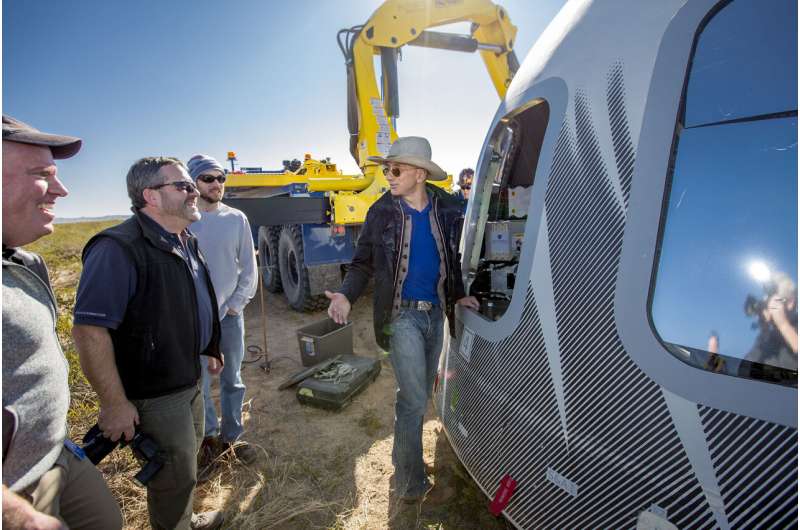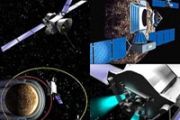
Copernical Team
ESA Highlights 2020: interactive format now available!

ESA Highlights 2020: interactive format now available!
ExoMars orbiter continues hunt for key signs of life on Mars

The ESA-Roscosmos Trace Gas Orbiter has set new upper limits on how much methane, ethane, ethylene and phosphine is in the martian atmosphere – four so-called ‘biomarker’ gases that are potential signs of life.
Tail without a comet: The dusty remains of Comet ATLAS

Freeze drying, oral health experiments make speedy return from space station aboard SpaceX Dragon

A suite of International Space Station scientific experiments soon journey back to Earth aboard the 22nd SpaceX commercial resupply services mission for NASA. Scientists on the ground look forward to having their experiments back within hours, an advantage that could provide better results. Dragon undocks from the space station July 7.
The combination of a spacecraft redesign allowing for faster unloading of research and the splashdown location near NASA's Kennedy Space Center in Florida makes it possible to return time-sensitive experiments to scientists much faster. In addition, Kennedy's Space Station Processing Facility is home to world-class laboratories offering tools and workspace to collect data and analyze samples.
Rescuing the Integral spacecraft: No thrust? No problem

A year ago tomorrow, a failure on the Integral spacecraft meant it fired its thrusters for likely the last time. In the days since, the spacecraft in Earth orbit has continued to shed light on the violent gamma ray universe, and it should soon be working even more efficiently than before, as mission control teams implement an ingenious new way to control the 18-year-old spacecraft.
Galileo Second Generation proof-of-concept testing begins

The first Galileo Second Generation hardware has begun testing, with test versions of the satellites’ navigation payloads undergoing evaluation by Airbus Defence and Space at their Ottobrunn facility in Germany and by Thales Alenia Space at ESA’s ESTEC technical centre in the Netherlands.
A European Robotic Arm to handle the Space Station

The European Robotic Arm (ERA) is set for launch on a Proton rocket to the International Space Station on 21 July at 16:58 CEST. The first robot that can ‘walk’ around the Russian part of the orbital complex will be launched with the new Russian Multipurpose Laboratory Module from the Baikonur Cosmodrome, in Kazakhstan.
Environmental concerns grow as space tourism lifts off
 After years of waiting, Richard Branson's journey to space this month on a Virgin Galactic vessel was supposed to be a triumphant homecoming. Instead, the jaunt attracted significant criticism - about its carbon footprint.
With Jeff Bezos set to launch on a Blue Origin rocket on July 20, and Elon Musk's SpaceX planning an all-civilian orbital mission in September, the nascent space tourism
After years of waiting, Richard Branson's journey to space this month on a Virgin Galactic vessel was supposed to be a triumphant homecoming. Instead, the jaunt attracted significant criticism - about its carbon footprint.
With Jeff Bezos set to launch on a Blue Origin rocket on July 20, and Elon Musk's SpaceX planning an all-civilian orbital mission in September, the nascent space tourism EXPLAINER: How Blue Origin's Jeff Bezos will soar into space

Centennial of ex-astronaut, US Senator John Glenn marked


































